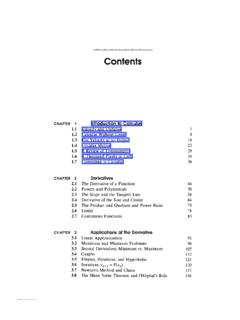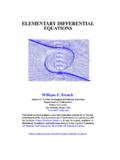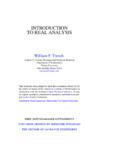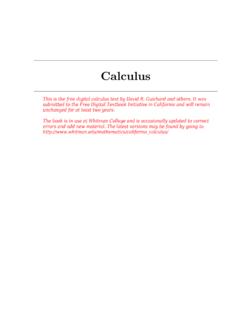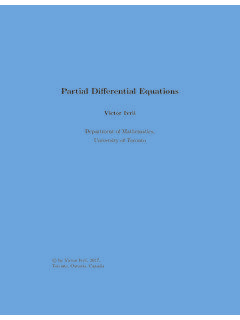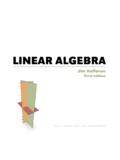Transcription of Business Precalculus - OpenTextBookStore
1 Business Precalculus Edition David Lippman ii Copyright 2016 David Lippman This text is licensed under a Creative Commons Attribution-Share Alike United States License. To view a copy of this license, visit or send a letter to Creative Commons, 171 Second Street, Suite 300, San Francisco, California, 94105, USA. You are free: to Share to copy, distribute, display, and perform the work to Remix to make derivative works Under the following conditions: Attribution. You must attribute the work in the manner specified by the author or licensor (but not in any way that suggests that they endorse you or your use of the work). Share Alike. If you alter, transform, or build upon this work, you may distribute the resulting work only under the same, similar or a compatible license. With the understanding that: Waiver. Any of the above conditions can be waived if you get permission from the copyright holder.
2 Other Rights. In no way are any of the following rights affected by the license: Your fair dealing or fair use rights; Apart from the remix rights granted under this license, the author's moral rights; Rights other persons may have either in the work itself or in how the work is used, such as publicity or privacy rights. Notice For any reuse or distribution, you must make clear to others the license terms of this work. The best way to do this is with a link to this web page: Chapters 1 3 are remixed from Precalculus : An Investigation of Functions, 2015 David Lippman and Melonie Rasmussen, under the Creative Commons Attribution Share-Alike license. chapter 4 is remixed from College Algebra, 2015 Rice University, produced by OpenStax College, under a Creative Commons Attribution license. Download the original for free at chapter 5 contains portions remixed from My the Numbers, Milos Podmanik, under the Creative Commons Attribution Non-Commercial Share-Alike license, and from Applied Finite Math Rupinder Sekhon, under the Creative Commons Attribution license.
3 chapter 6 8 are remixed from Math in Society, 2015 David Lippman, under the Creative Commons Attribution Share-Alike license. iii About the Author David Lippman received his master s degree in mathematics from Western Washington University and has been teaching at Pierce College since Fall 2000. David has been long time advocate of open learning, open materials, and basically any idea that will reduce the cost of education for students. It started by supporting the college s calculator rental program, and running a book loan scholarship program. Eventually the frustration with the escalating costs of commercial text books and the online homework systems that charged for access led him and his colleagues to take action. First, David developed IMathAS, open source online math homework software that runs and Through this platform, he became an integral part of a vibrant sharing and learning community of teachers from around Washington State that support and contribute to WAMAP.
4 Those pioneering efforts, supported by dozens of other dedicated faculty and financial support from the Transition Math Project, led to a system used by thousands of students every quarter, saving hundreds of thousands of dollars over comparable commercial offerings. David continued further and wrote his first open textbook , Math in Society, a math for liberal arts majors book, after being frustrated by students having to pay $100+ for a textbook for a terminal course. Frustrated by both cost and the style of commercial texts, David and colleague Melonie Rasmussen began writing Precalculus : An Investigation of Functions in 2010. This text pulls in portions from Precalculus , Math in Society, and other open textbooks, and adapts them to have the Business focus desired for a Business Precalculus or finite math course. This text serves as preparation for Applied calculus , a Business -focused brief calculus text coauthored by Shana Calaway, Dale Hoffman, and David.
5 Supplements Online homework and video lesson sets to accompany this text are available on iv Table of Contents chapter 1: Functions and Lines .. 1 Section Functions and Function Notation .. 1 Section Domain and Range .. 10 Section Rates of Change and Behavior of Graphs .. 19 Section Linear Functions .. 27 Section Graphs of Linear Functions .. 34 Section Modeling with Linear Functions .. 45 Section Fitting Linear Models to Data .. 53 chapter 2: Systems of Equations and Matrices .. 59 Section Systems of Equations .. 59 Section Solving Systems using Matrices .. 76 Section Matrix Operations .. 90 Section Solving Systems with Inverses .. 101 chapter 3: Linear Programming .. 115 Section Inequalities in One Variable .. 115 Section Linear Inequalities .. 125 Section Graphical Solutions .. 131 Section Simplex Method .. 140 Section Applications of Linear Programming.
6 146 chapter 4: Polynomial and Rational Functions .. 153 Section Quadratic Functions .. 153 Section Polynomial Functions .. 164 Section Rational Functions .. 175 chapter 5: Exponential and Logarithmic Functions .. 185 Section Exponential Functions .. 185 Section Logarithmic Functions .. 199 Section Exponential and Logarithmic Models .. 211 chapter 6: Finance .. 221 Section Simple and Compound Interest .. 221 Section Annuities .. 230 Section Payout Annuities .. 235 Section Loans .. 239 Section Multistage Finance Problems .. 246 chapter 7: Sets .. 253 Section Sets .. 253 Section Venn Diagrams and Cardinality .. 258 chapter 8: Probability .. 265 Section Concepts of Probability .. 265 Section Conditional Probability and Bayes Theorem .. 275 Section Counting .. 283 Section Expected Value .. 296 1 This chapter is part of Business Precalculus David Lippman 2016.
7 This content is remixed from Precalculus : An Investigation of Functions Lippman & Rasmussen 2011. This material is licensed under a Creative Commons CC-BY-SA license. chapter 1: Functions and Lines Section Functions and Function Notation .. 1 Section Domain and Range .. 10 Section Rates of Change and Behavior of Graphs .. 19 Section Linear Functions .. 27 Section Graphs of Linear Functions .. 34 Section Modeling with Linear Functions .. 45 Section Fitting Linear Models to Data .. 53 Section Functions and Function Notation What is a Function? The natural world is full of relationships between quantities that change. When we see these relationships, it is natural for us to ask If I know one quantity, can I then determine the other? This establishes the idea of an input quantity, or independent variable, and a corresponding output quantity, or dependent variable.
8 From this we get the notion of a functional relationship in which the output can be determined from the input. For some quantities, like height and age, there are certainly relationships between these quantities. Given a specific person and any age, it is easy enough to determine their height, but if we tried to reverse that relationship and determine age from a given height, that would be problematic, since most people maintain the same height for many years. Function Function: A rule for a relationship between an input, or independent, quantity and an output, or dependent, quantity in which each input value uniquely determines one output value. We say the output is a function of the input. Example 1 In the height and age example above, is height a function of age? Is age a function of height? In the height and age example above, it would be correct to say that height is a function of age, since each age uniquely determines a height.
9 For example, on my 18th birthday, I had exactly one height of 69 inches. However, age is not a function of height, since one height input might correspond with more than one output age. For example, for an input height of 70 inches, there is more than one output of age since I was 70 inches at the age of 20 and 21. 2 chapter 1 Example 2 At a coffee shop, the menu consists of items and their prices. Is price a function of the item? Is the item a function of the price? We could say that price is a function of the item, since each input of an item has one output of a price corresponding to it. We could not say that item is a function of price, since two items might have the same price. Example 3 In many classes the overall percentage you earn in the course corresponds to a decimal grade point. Is decimal grade a function of percentage? Is percentage a function of decimal grade?
10 For any percentage earned, there would be a decimal grade associated, so we could say that the decimal grade is a function of percentage. That is, if you input the percentage, your output would be a decimal grade. Percentage may or may not be a function of decimal grade, depending upon the teacher s grading scheme. With some grading systems, there are a range of percentages that correspond to the same decimal grade. Try it Now Let s consider bank account information. 1. Is your balance a function of your bank account number? (if you input a bank account number does it make sense that the output is your balance?) 2. Is your bank account number a function of your balance? (if you input a balance does it make sense that the output is your bank account number?) Function Notation To simplify writing out expressions and equations involving functions, a simplified notation is often used.










